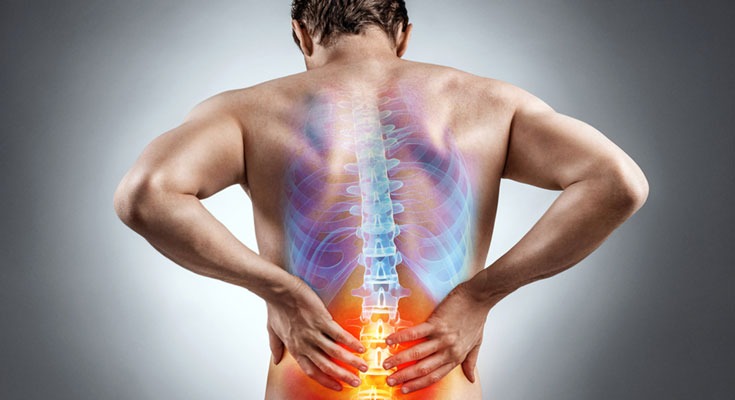The pain that comes with Sciatica is life-changing and hard to bear. Every year millions of people suffer from Sciatica and back pain and there’s no fixed treatment for it. The pain is like a burning sensation throughout your lower back all the way to your buttocks and knees. Sometimes the pain can also be sharp, shooting, or electric. It often brings weakness, numbness, and tingling in your back and legs. If you sit for a long time daily, it can make sciatica pain even worse. Once the sciatica pain starts, it doesn’t leave very quickly. There have been very few people whose sciatica pain can fade out over time, but in most cases, the pain lasts weeks or even months. Fortunately, there are some basic things that you can do to reduce sciatica pain. This includes avoiding some foods if you have sciatica. In this article, we have mentioned some foods to avoid in Sciatica.
Deeper Understanding of Sciatica
The origin of sciatica is from the sciatic nerve, a large nerve that’s made up of 5 nerves that emerge from vertebrae in the lower back. As suggested from the sciatica pain, this bundle of nerves reaches all the way to the foot, separating into several nerves as it travels to the foot.
Problems in the discs of the lower back are often involved in triggering sciatica pain. Most of the time the pain comes from herniated discs, a bone spur on a vertebra, or a disc that has been dislocated.
While disc problems may need to be addressed directly, a person that’s suffering from sciatica can get a huge level of relief just by changing their diet. There are particular foods to avoid in Sciatica and they can make your pain worse.
Common Reasons for Sciatica Pain
There are several reasons for sciatica pain and it can be triggered via some medical conditions that include:
- Herniated or Slipped Disc: A herniated or slipped disc that causes pressure on a nerve root is the biggest reason for sciatica pain. About 1-5% of all people in the US will have a slipped disc at at least one point in their lives. Pressure from vertebrae can cause the gel-like center of a disc to herniate.
- Degenerative Disc: This is when a disc goes through natural wear and tear, between the vertebrae of the spine. The wear and tear of the discs can shorten their height and lead to nerves becoming narrower. This can pinch the sciatic nerve roots as they leave the spine and can trigger sciatic pain.
- Spondylolisthesis: This refers to a slippage of one vertebra so that it is out of line with the one above it. This narrows the opening through which the nerve exits, this extended spinal bone can pinch on the sciatic nerve and cause sciatic pain.
Common Symptoms of Sciatica
To figure out if you have sciatica or not, you need to keep an eye out for these symptoms:
- Constant moderate to severe pain in your lower back, buttocks, and down your leg.
- Numbness or weakness in your lower back, buttock, leg, or feet.
- Pins and needles like sensation feeling in your legs, toes, or feet
- Loss of bowel and bladder control
- Pain that gets worse with movement, loss of movement
Foods to Avoid in Sciatica
To avoid these foods in Sciatica, you may need to avoid the habit of reading labels on every prepared food you eat. Here are some of the most common inflammatory foods to avoid in sciatica:
- Sugar and high fructose-rich corn syrup
- Trans Fats: These food items include margarine and any hydrogenated (solidified) or partially-hydrogenated oils.
- Refined Vegetables Oils: Not every type of oil is bad. You just need to avoid food items that are extracted with chemicals or using milling. These oils generally include soybean oil, safflower oil, sunflower oil, and canola oil. Any food prepared in these oils should also be avoided such as french fries, chips, and more.
- Refined Carbs: Carbohydrates that have their fibers removed are the perfect housing unit for inflammatory gut bacteria. These carbs can make sciatica pain worse. Common examples of these carbs are Flour, refined corn products, white rice, commercial cereals, and sugars.
- Alcohol: Alcohol in excessive amounts is one of the foods to avoid in Sciatica. Moderate amounts of alcohol may offer some health benefits, but an excessive amount of alcohol can be bad for people with sciatica.
- Processed Meats: Sausages, bacon, ham, hot dogs, smoked meat and beef jerky are highly processed meats that are bad for those who suffer from sciatica.
Foods That Help in Reducing Sciatica Pain
As there are some foods to avoid in Sciatica, there are also foods that can help in reducing sciatica pain and reduce inflammation. Here are some of the good food options:
- Fish: Salmon and halibut and any other fish that are rich in Omega-3 fatty acids that help in reducing inflammation.
- Selected Fruits: Some foods are incredible for sciatica pain treatment such as fresh strawberries, blueberries, cherries and pineapples, and more.
- Unsweetened green tea is good food for Sciatica sufferer
- Foods Rich in Vitamin A: Vitamin A-rich foods are great for reducing sciatica pain. These foods include carrots, beef liver, sweet potato, spinach, broccoli, and sweet red pepper.
- Vitamin C Rich Foods: Vitamin C-rich foods are known for their anti-inflammatory properties. These foods include fresh citrus fruits, peppers, strawberries, Brussel sprouts, rose hips, guavas, and parsley.
- Selected Spices and Flavorings: Turmeric, ginger, and garlic into foods and drinks can reduce sciatica pain.
- Drink a lot of water every day.

